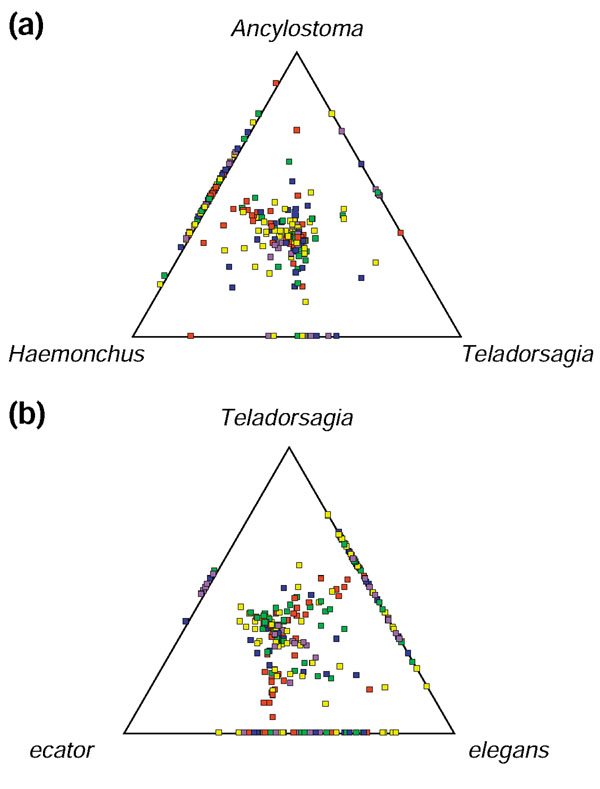Figure 1.

Similarity of N. brasiliensis ESTs to sequences from other nematodes. SimiTri [54] was used to plot 736 N. brasiliensis EST clusters against related species database entries. For each consensus sequence associated with the 736 Nippo clusters, a BLAST was performed against a series of different databases. Each tile in the graphic represents a unique consensus sequence and its relative position is computed from the raw BLAST scores derived above (with a cutoff of ≥ 50). Hence each tile's position shows its degree of sequence similarity to each of the three selected databases. Sequences showing similarity to only one database are not shown. Sequences showing sequence similarity to only two databases appear on the lines joining the two databases. Tiles are colored by their highest TBLASTX score to each of the databases: red ≥ 300; yellow ≥ 200; green ≥ 150, blue ≥ 100 and purple < 100. (a) SimiTri plot showing sequence similarity relationships between N. brasiliensis consensus sequences and database entries of Ancylostoma caninum/duodenale ESTs (20,177 entries, 386 hits), Haemonchus contortus ESTs (22,337 entries, 384 hits) and Teladorsagia circumcincta ESTs (5,300 entries, 264 hits). Database comparisons were performed using TBLASTX. (b) SimiTri plot showing sequence similarity relationships between N. brasiliensis consensus sequences and database entries of Necator americanus ESTs (4,821 entries, 244 hits), Teladorsagia circumcincta ESTs (5,300 entries, 264 hits), and C. elegans wormpep (21,600 entries, 466 hits). Database comparisons were performed using TBLASTX for N. americanus and T. circumcincta, while C. elegans wormpep comparions used BLASTX.
